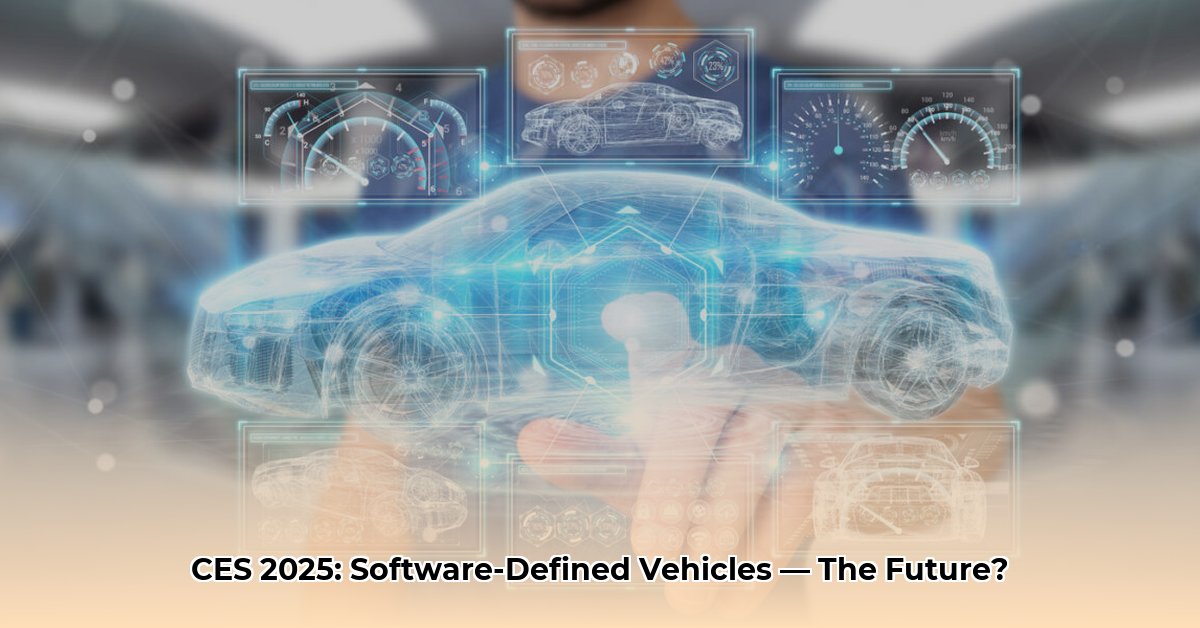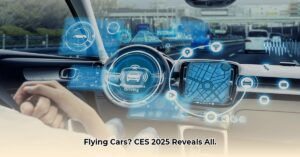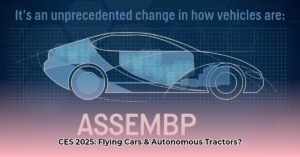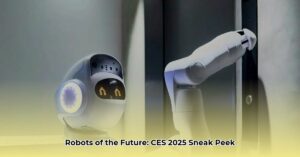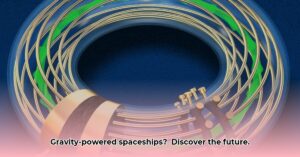CES 2025 underscored a monumental shift: software is now the driving force behind innovation, not just in vehicles, but across the tech landscape. This article explores the software revolution, from its fundamental role in our devices to its transformative impact on the automotive industry, particularly with the rise of Software-Defined Vehicles (SDVs).
Decoding Software: The Foundation of Innovation
What exactly is software? Simply put, it’s the set of instructions that tells a computer—or a car, a smartphone, even a refrigerator—what to do. It’s the invisible hand orchestrating the hardware, enabling the seamless functionality we often take for granted. Software encompasses everything from the operating system (OS), the foundational layer managing core functions, to the applications we interact with daily, like web browsers, games, and productivity tools.
Think of it like this: your computer’s hardware is the physical body, while the software is the brain. The OS, like Windows or macOS, acts as the central nervous system, coordinating the various hardware components. Application software, on the other hand, performs specific tasks, much like our conscious thoughts and actions.
Types of Software: A Diverse Ecosystem
The software landscape is vast and varied. Here’s a glimpse into the key categories:
-
System Software: The bedrock of any computing device, managing hardware resources and providing a platform for applications to run. Examples include operating systems (Windows, macOS, Linux, iOS, Android), device drivers, and firmware.
-
Application Software: Designed for specific user tasks, ranging from productivity tools (Microsoft Office, Google Workspace) to entertainment platforms (Netflix, Spotify) and everything in between.
-
Programming Software: The tools developers use to create software, including programming languages (Python, Java, C++, JavaScript), compilers, and debuggers.
-
Middleware: The unsung hero of software integration. Middleware acts as a bridge, enabling different software components to communicate and share data, even if they were written in different programming languages. This is crucial for complex systems like SDVs, where numerous software components must work together seamlessly.
SDVs at CES 2025: Software Takes the Wheel
CES 2025 showcased the transformative potential of SDVs. These vehicles are no longer defined solely by their mechanical components; software is now the defining factor, dictating everything from performance and efficiency to the in-car experience.
Key takeaways from CES 2025:
-
AI Integration: Artificial intelligence is becoming increasingly integral to SDVs, powering advanced driver-assistance systems (ADAS), personalized in-car experiences, and even autonomous driving capabilities.
-
Over-the-Air (OTA) Updates: Just like our smartphones, SDVs can receive software updates wirelessly, enabling continuous improvement and the addition of new features without requiring physical modifications. This could potentially extend the lifespan of vehicles and enhance their resale value.
-
Connectivity: SDVs are becoming increasingly connected, not just to the internet, but also to each other (V2X communication) and the surrounding infrastructure. This connectivity unlocks possibilities for enhanced safety features, real-time traffic updates, and optimized routing.
Key Players and Innovations:
| Company | SDV Innovation |
|---|---|
| BMW | Panoramic iDrive: Transforming the windshield into an interactive display. |
| Honda & Sony | Afeela 1: A collaboration showcasing the integration of Sony’s advanced technology with Honda’s automotive expertise. ASIMO OS: Custom OS optimized for EVs. |
| Garmin | Unified Cabin Concept: Seamless integration of multiple screens, augmented reality (AR) overlays, and AI-powered voice assistants. |
| Harman | Luna AI Avatar: A personalized virtual assistant designed for the in-car environment. |
| HERE Technologies | AI Assistant: Personalized journey assistance, providing real-time traffic information, optimized routes, and charging station locations for EVs. |
| Maserati | MC20 Cielo: Demonstrating the potential of autonomous driving capabilities in a high-performance sports car. |
| Nvidia | High-performance chips powering the complex computations required for autonomous driving and other advanced SDV features. |
| ETAS | Production-ready middleware solutions addressing key challenges in SDV development, including cybersecurity and software integration. |
| QNX (BlackBerry) & Microsoft | QNX SDP 8.0 on Microsoft Azure: Leveraging the power of cloud computing for faster and more efficient SDV software development and testing. QNX Hypervisor and QNX Cabin reference architecture for advanced digital cockpit development. |
The Road Ahead: Opportunities and Challenges
The software-defined future of driving holds immense promise, including:
-
Enhanced Safety: ADAS features like lane departure warnings, automatic emergency braking, and adaptive cruise control can significantly reduce accidents. Autonomous driving capabilities have the potential to eliminate human error, a leading cause of accidents.
-
Improved Efficiency: Optimized routing, predictive maintenance, and smarter energy management can lead to reduced fuel consumption and lower emissions.
-
Personalized Experiences: SDVs can learn driver preferences and adjust settings accordingly, creating a more comfortable and convenient driving experience.
However, challenges remain:
-
Security: As vehicles become more reliant on software, they also become more vulnerable to cyberattacks. Ensuring the security of SDV systems is paramount.
-
Regulation: The legal and regulatory landscape is still evolving to accommodate the unique characteristics of SDVs. Clear guidelines and standards are needed to ensure safety and manage liability.
-
Ethical Considerations: As autonomous driving technology advances, ethical dilemmas surrounding decision-making in critical situations will need to be addressed.
Conclusion: The Software-Driven Future
Software is no longer just a component; it’s the defining force shaping the future of not only the automotive industry but technology as a whole. From the apps on our phones to the sophisticated systems in our cars, software is transforming how we live, work, and interact with the world. While challenges remain, the potential benefits are immense, and the ongoing research and development in areas like AI, cybersecurity, and 5G connectivity suggest a future where software continues to drive innovation and reshape our world in profound ways.

